For artists and publishers, the Risograph offers a quick, economic and environmentally-friendly way of working, and once hooked, you’re unlikely to go back.
Visiting an art book fair anywhere in the world today – and there are lots of them! – you cannot avoid meeting riso-printed artists’ books, magazines and fine art prints. Riso is a cheap printing method that wasn’t intended for the art world but for business-administrative purposes. In the 1980’s, the Risograph was launched in Japan to do cheap in-house printing at churches, small political parties, schools and other institutions.
But, with the boom of independent publishing and self-publishing beginning at the turn of this century, the Risograph made its entrance into the underground art world.
My first encounter with a Risograph was when my husband bought a Risograph GR 3770 plus a dysfunctional machine that could be used for spare parts. (We found room for the very large spare parts in the basement with all our other discarded
electronic stuff).
So, it turned out the GR 3770 needed maintenance from day one and the best help you can get to fix a Risograph is from other riso owners.

A selection of riso-printed artists’ books to be found at Bladr – platform for artists’
books, a book store, exhibition space and more based in Copenhagen.
Photos: Bladr.
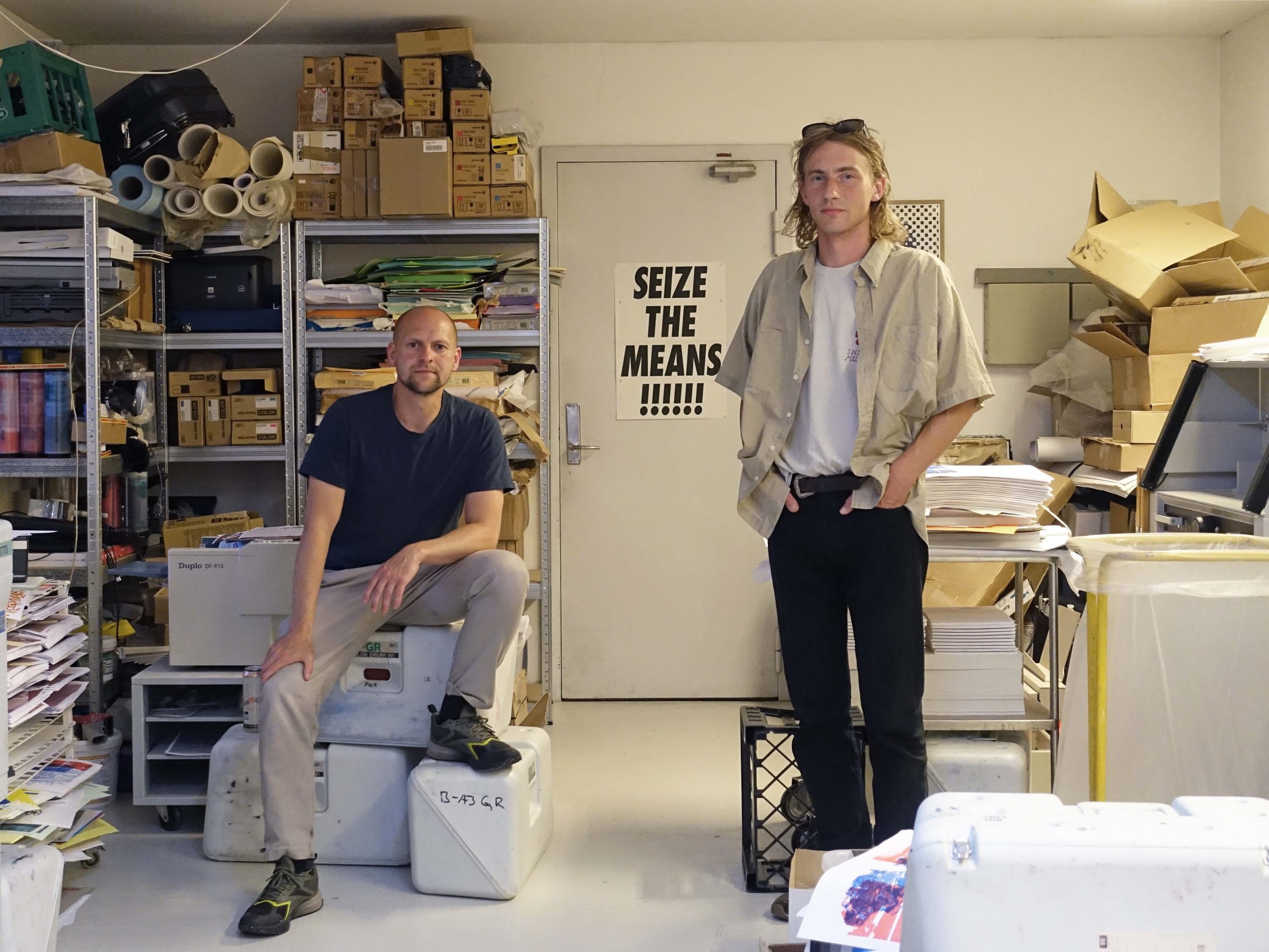
Kristian B. Johansson and Wilfred Wagner getting ready for CHART Book Fair
2022 at Johansson’s KBJ Printing in Svendborg.
Photo: Kristian B. Johansson and Wilfred Wagner.
Help arrived in the form of artists Kristian B. Johansson and Wilfred Wagner: riso masters, publishers and printers who ran the platform KLD Repro from 2014-2020.
Publishing has been an integral part of Johansson and Wagner’s practices, and through KLD Repro they collectively generated a publishing practice by thinking of their studio and copy shop as one.
The Risograph combines the high speed of a photocopier machine with a material aesthetic similar to silkscreen printing. The first step in printing is to scan an image – like with a normal photocopier – or generate an image using software.
The digital signals from this scan then instruct the riso to burn microscopic holes in a sheet of thin paper to make a master stencil for printing in one colour. When making the actual print, wet, sustainable oil-based ink is pushed through the perforated master paper. The ink is not coated and touching a riso print might leave you with messy fingers.
It is exactly that, the tactile quality of a riso print, that makes it so wonderfully appealing. You can feel the ink. And the colours, oh so bright and vivid! What really characterises the technology is its imperfections and variations.
Often there will be a few millimetres where the masters do not line up, which can make the image shimmer a bit. Or you find marks on the print from the machinery, or that the colour density has changed throughout the print run - essentially every single “copy” is unique.
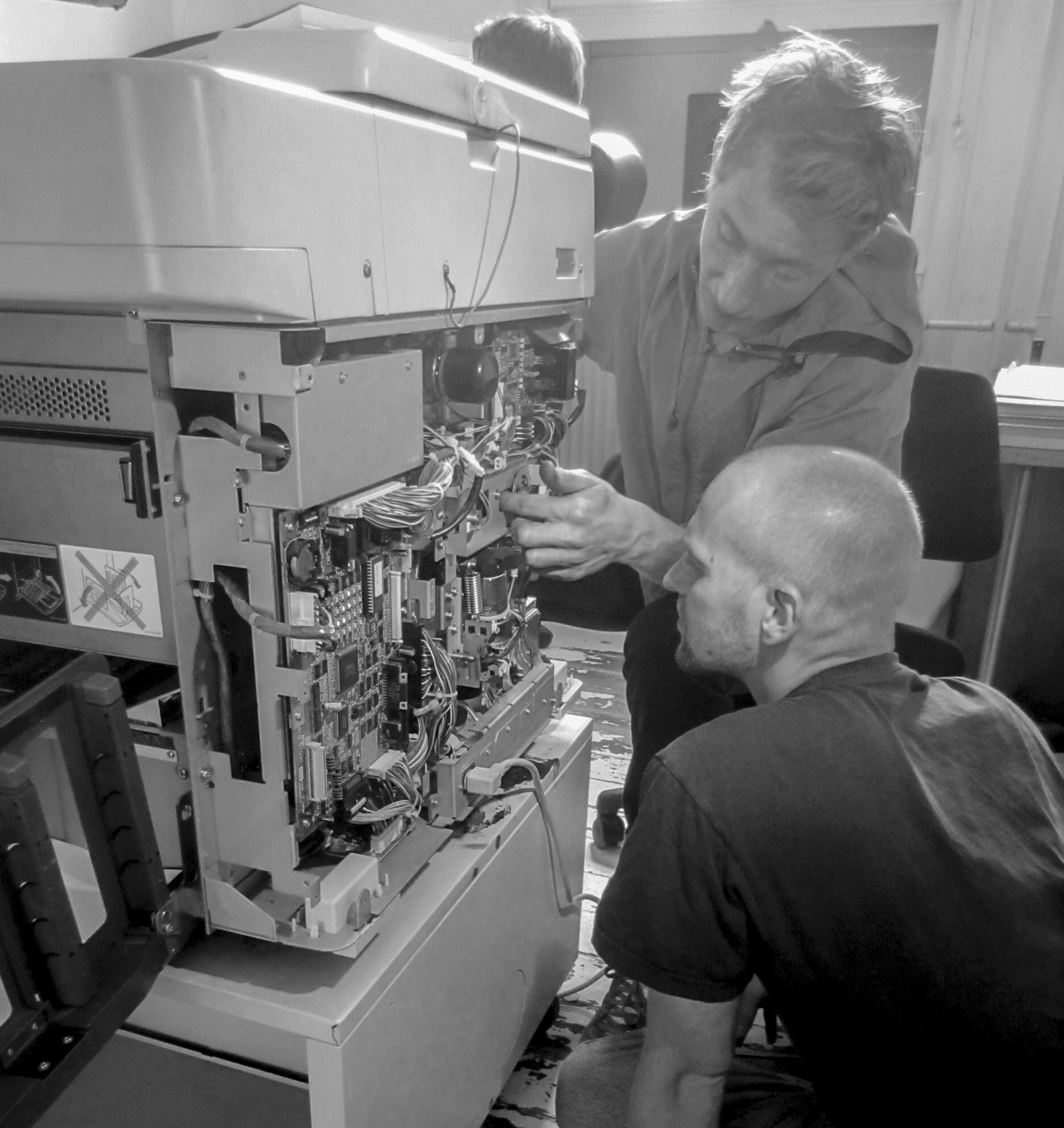
Kristian B. Johansson and Wilfred Wagner tirelessly trying to fix a Risograph back in September 2016.
Photo: Sara Lubich.
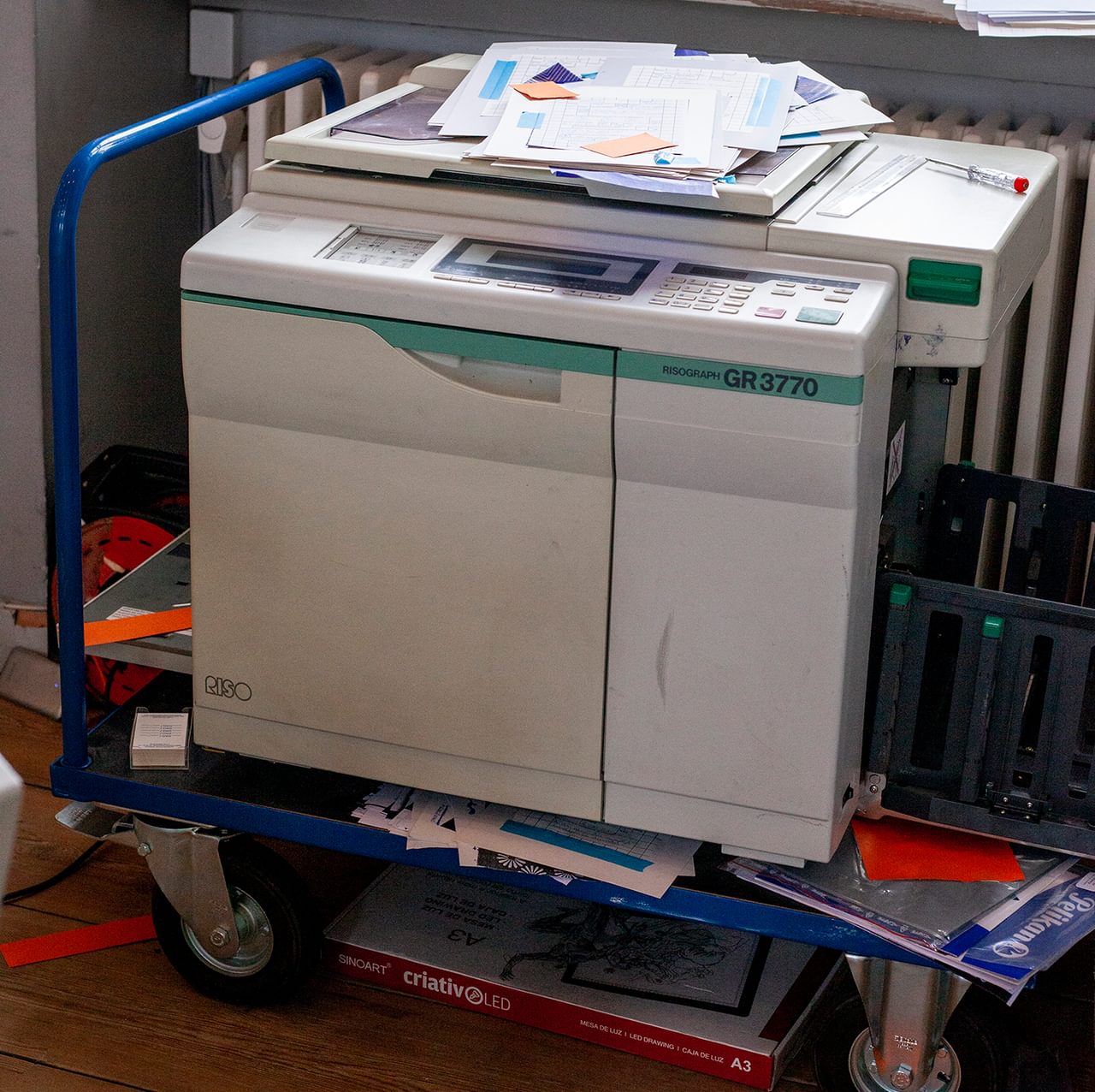
Riso Machine.
Photo: Sara Lubich.
When talking about riso-printed artists’ books – books created by artists that are artworks in themselves – scholar Brad Haylock suggests we think of them as ‘auratic multiples’.
It is a hybrid category that combines Johanna Drucker’s two broad categories, the ‘democratic multiple’ and the ‘auratic object’. Drucker is the author of the canonical survey and history of the artist’s book, The Century of Artists’ Books, first published in 1994.
The ‘democratic multiple’ corresponds closely with the idea of an artist’s book that comes in a larger edition, standard print and is affordable – both in terms of production cost and purchase price for viewers. For the ‘auratic object,’ Drucker deploys Walter Benjamin’s notion of the aura of an artwork.
It often has an “inexplicable air of power, attraction or uniqueness.” Artists’ books of this kind are unique or very limited in edition, handmade and often have a high production cost.
The riso-printed artist’s book combines all of these qualities; due to it’s mechanical mode of reproduction it keeps its status as a democratic artwork, whilst an auratic quality is also achieved via quirky imperfections and an artisanal method.
Many artists and designers around the world have opened studios and small publishing houses based on the labour of a Risograph.
When asked about the reason for choosing the Risograph for their work, publisher and artist Paul John from the New York-based studio Endless Editions simply puts it this way: “[Working with risography] seizes the matter of production.”
Now, what isn’t clear to you until you have found your way inside the world of riso, is that you enter a wholehearted community. You sense a thriving artistic energy and a feeling of caring - both for the outcome of the printing and the machine, but also for the artistic riso community as such. Online you can find Risograph owners around the globe
ready to help you and your riso.
Invited by CHART as part of Bladr’s presentation at CHART Book Fair 2022, Kristian B. Johansson and Wilfred Wagner joined forces again to host a performance workshop.
During CHART, every exhibitor at the book fair was invited to take part in the catalogue experiment Table of Content. Johansson and Wagner wanted to explore the meaning and importance of book fairs, especially to small independent publishers.
To produce the publication, each exhibitor was asked to fill out an analogue survey on carbon paper and to provide visual extracts from publications they were presenting at the fair.
From his studio in Svendborg, Johansson had brought a Risograph to the book fair and in the corner in Festsalen, visitors and exhibitors could witness the catalogue in the making.
There is always a moment of anticipation when you hear the peculiar sound of the machine spitting the paper out and it hits the tray: “cli-dak, cli-dak, cli-dak” - fast and consistent.
And then there it was, the catalogue Table of Content, representing community, dialogue and a range of artistic practices at this year’s book fair. Bound in the late hours of Friday, the catalogue was ready for launch on Saturday.
Excitingly, the performance workshop Table of Content strengthened the representation of the underground art scene at CHART 2022, where publishing as a form of practice continues to grow in terms of significance.
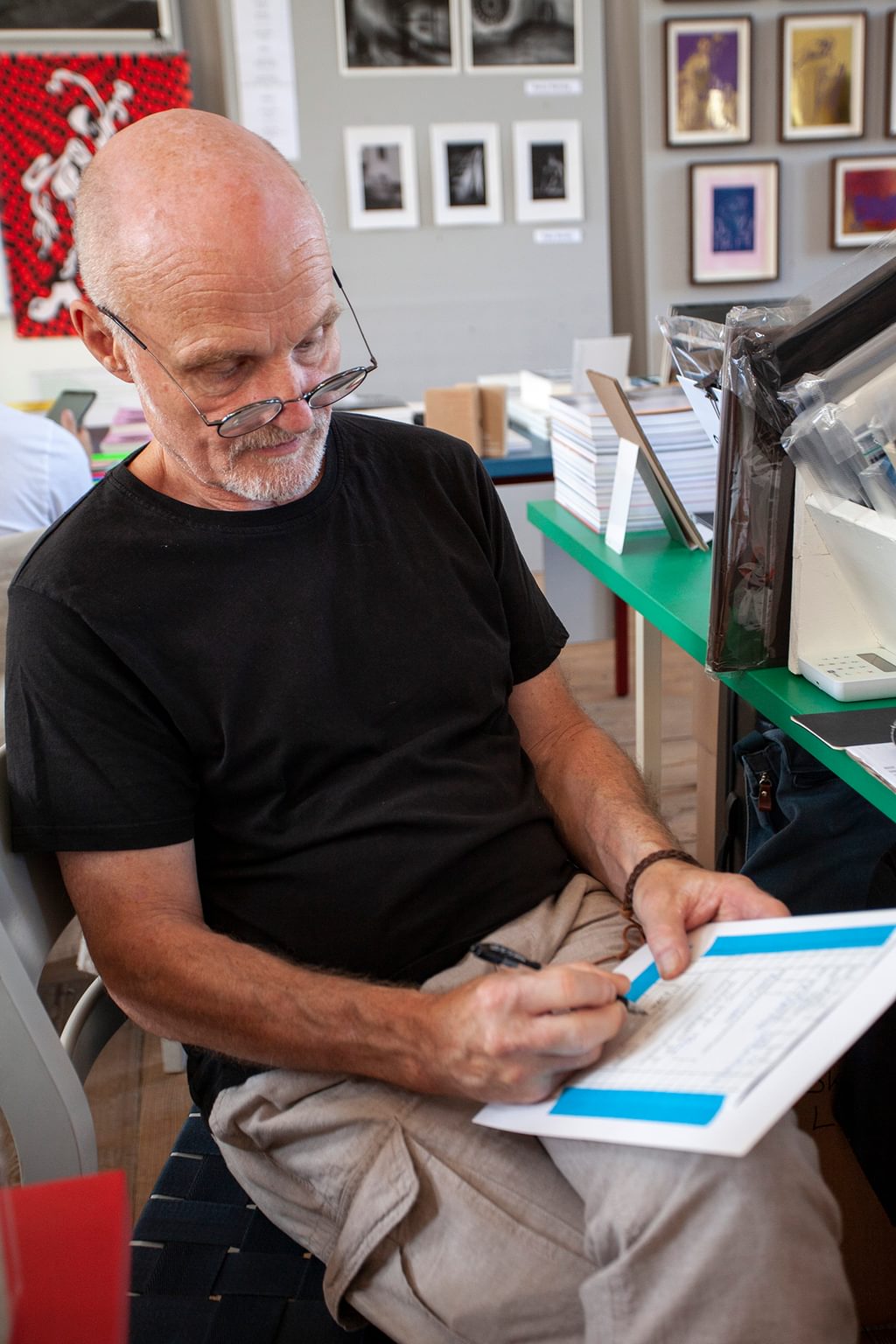
Publisher Gösta Flemming from Journal filling out the survey for Table of Content at CHART Book Fair 2022.
Photo: Sara Lubich
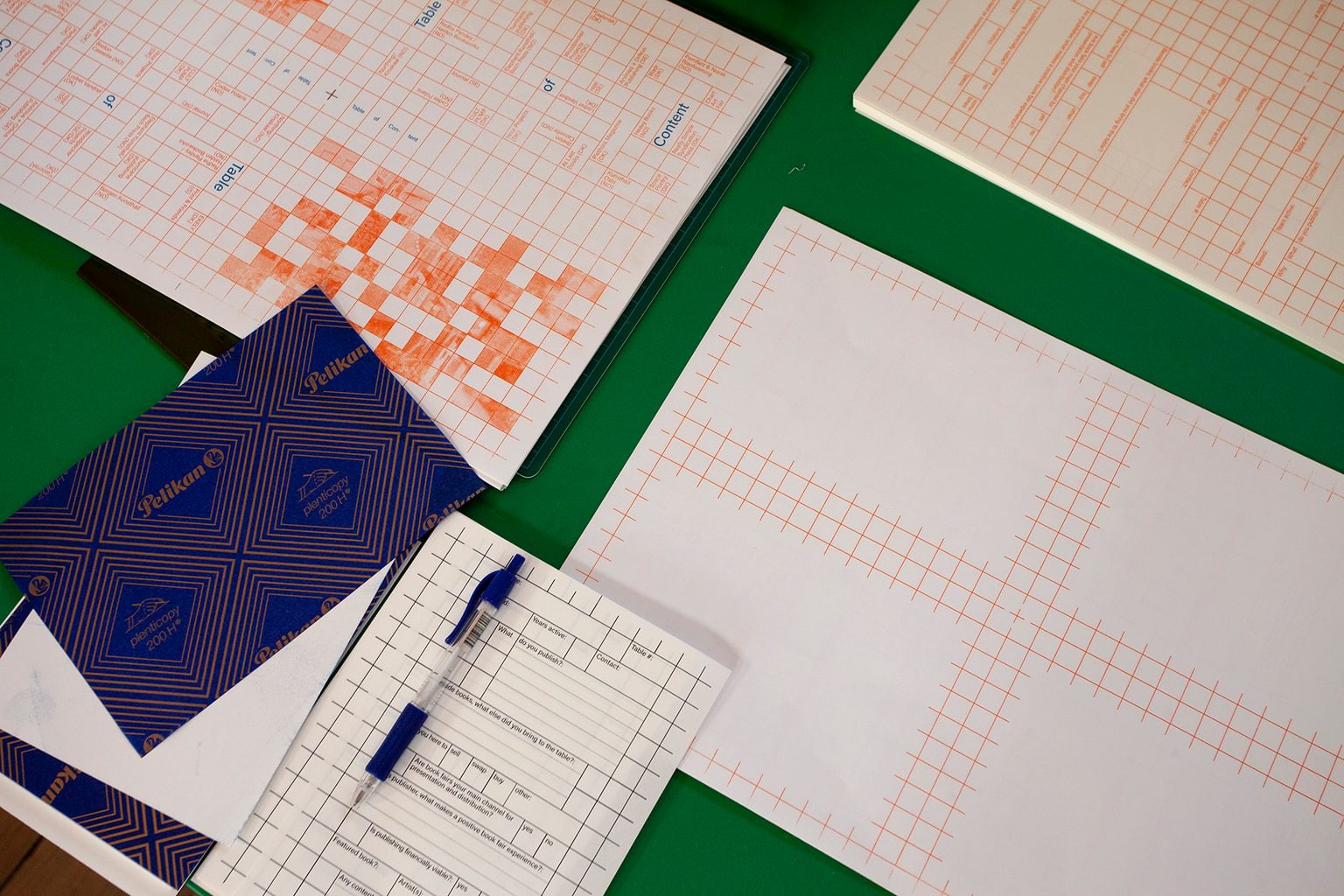
Table of Content
Photo: Sara Lubich.
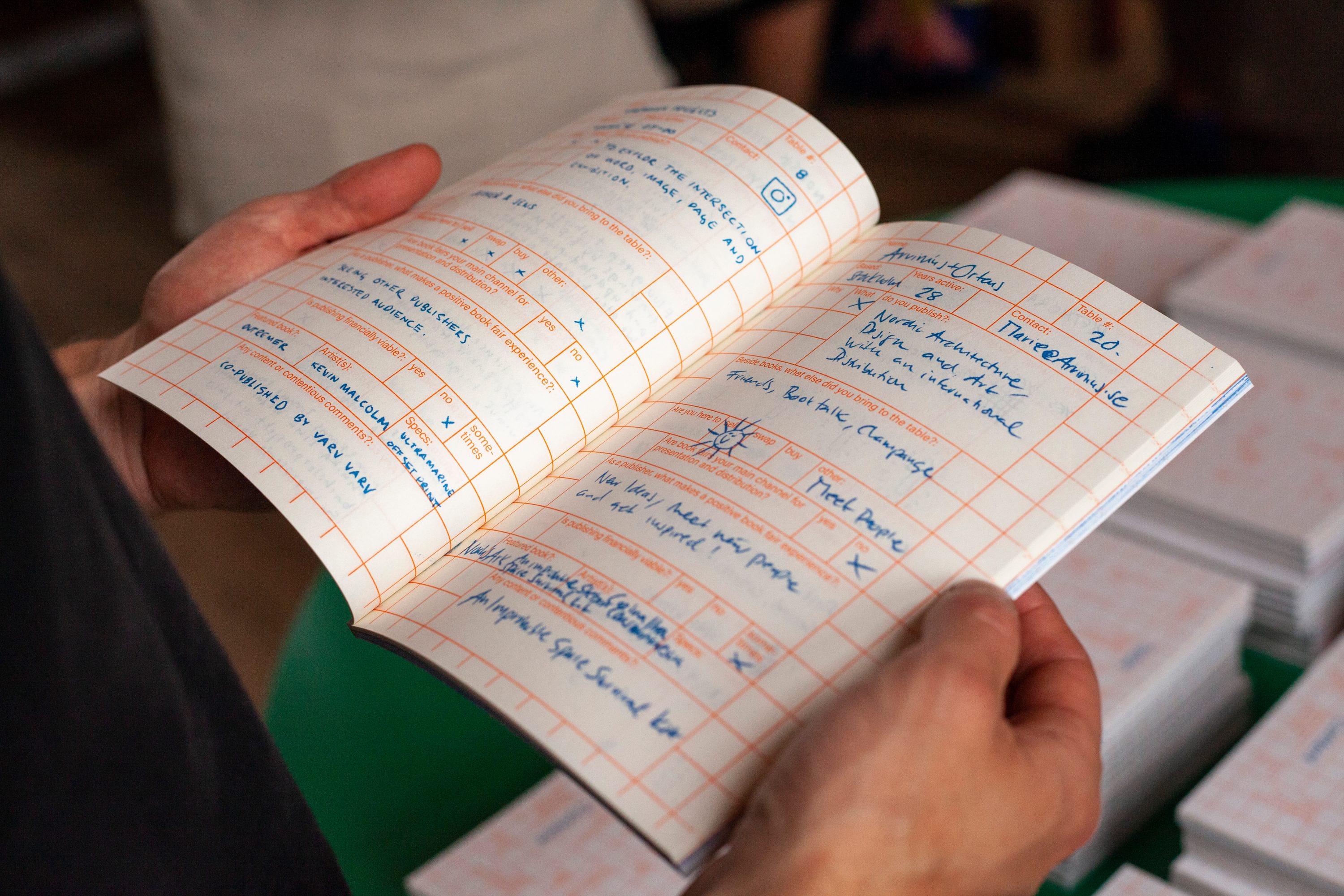
Table of Content
Photo: Sara Lubich.
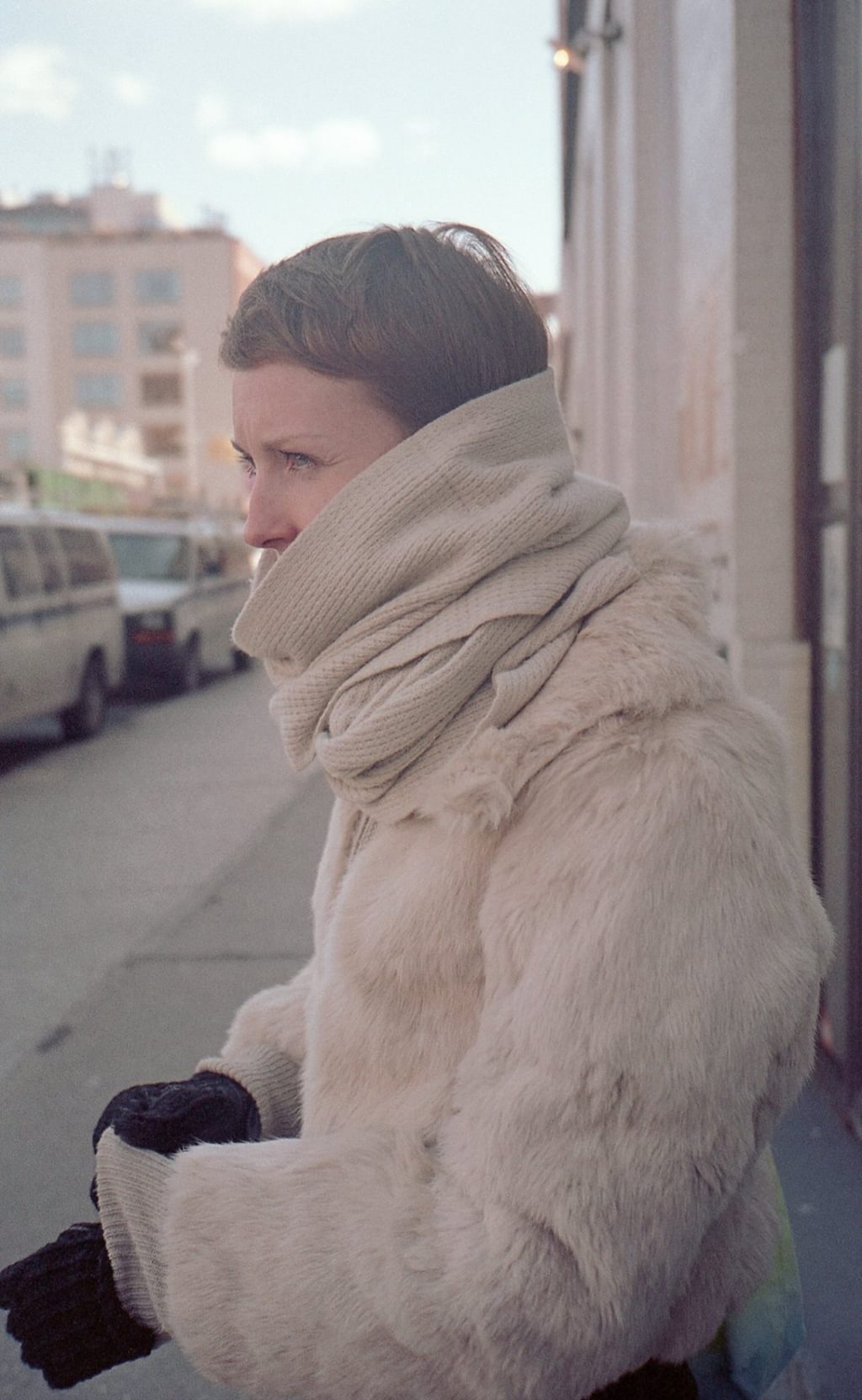
Sara Lubich is a visual artist and curator. She has co-founded the Copenhagen-based platform for artists’ books ‘Bladr’ and the artist-run ‘Galleri 1,4 m3’. Her artist’s book “Snow” (launched at CHART Book Fair 2022) is riso-printed.
Photo: Fryd Frydendahl




